The Sord M68 dual CPU computer
The Sord M68 is a dual-CPU computer, capable of 8-bit and 16-bit computing. The machine is provided with a Motorola 68000 running at 10MHz and a Zilog Z80A processor running at 4MHz. A switch on the machine determines which CPU is running the computer. When in 16-bit mode, the Z80A processor takes the role of I/O processor, providing fast processing for peripheral devices. When in 8-bit mode, the CPU is the Z80A processor.
Because of the dual architecture, the M68 has two busses: a 16-bit bus with 3 expansion slots, and an 8-bit bus with two S-100 slots, to provide backwards compatibility with S-100 expansion boards.
The computer comes in two different configurations:
- M68 Mark IV - with 2 5.25" 1.2MByte disk drives
- M68 Mark V - with 2 8" 1.2MByte disk drives
The computer allows for one to four hard disks that can be connected, 5.25" 8MByte HDD, or 8" 20MByte HDD. Another feature is an optional SC88 expansion card with an Intel 8088 processor.
The M68 is capable of running CP/M-80 or CP/M-68K out of the box, and with the SC88 expansion card, that houses the Intel 8088 processor, the machine is also capable of running PC-DOS.
Sord M68 RGB Connector
These technical specifications are not complete, but may assist in connecting the M68 to a VGA monitor.
- pin 1: RED
- pin 4: GREEN
- pin 5: BLUE
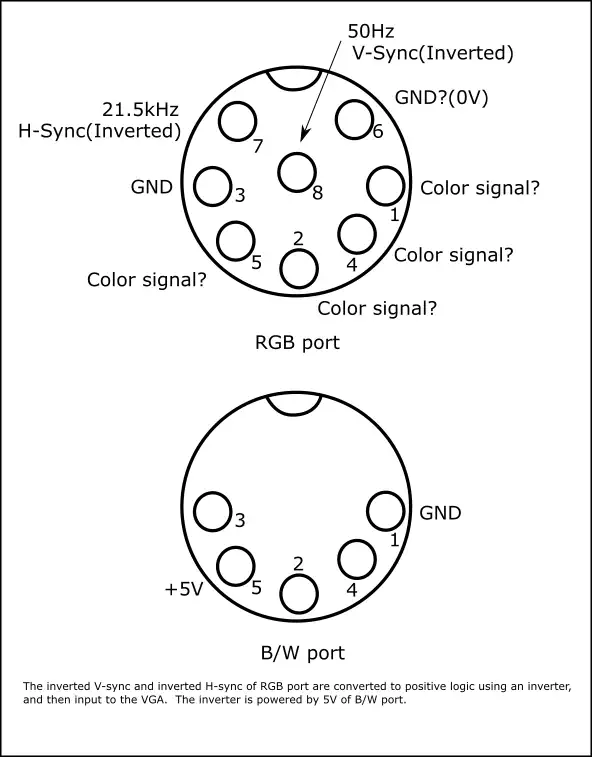
History of SORD computing
SORD was a Japanese computer company founded by Takayohi Shiina in 1970 when he was 26 years old. Initially the company wrote software for the Digital PDP series of microcomputers, but later on in he 1970's branched out into hardware production. The name SORD is a contraction of SOftware/haRDware, reflecting the dual focus of the company.
The company was known for producing a wide range of computers and peripherals, including personal computers, workstations, servers, and storage systems. SORD was particularly successful in the Japanese market, where it was able to compete with larger companies such as IBM and Fujitsu. One of their most successful product lines was the SORD M200, a personal computer that was popular with businesses and consumers in Japan. SORD also developed a number of innovative technologies, such as the first Japanese-language word processor and the first Japanese-language computer game.
The M200 was released in 1977, followed by the M100 and various other versions of the M100/M200 series, plus the multi-user M223 and M243 computers.
The SORD M23 followed in 1981 and become one of the most popular SORD computers. It was one of the first to see significant use outside Japan, and was even relatively popular in New Zealand. The M68, a curious dual 8/16 bit computer using both 68000 and Z80A CPUs, was releaased in Japan in 1983.
On the software side, PIPS - Personal (or Pan) Information Processing Sytem was released in 1980. This package was 'not quite' a spreadsheet in the Visicalc/123 sense of the term, and 'not quite' a database, but combined features of both into an easy to understand business package. This was followed by PIPS-II in 1981, PIPS-III in 1982 and a complete rewrite (by a team led by kiwi Peter Hyde) as 4G-PIPS in 1986. I still have a copy of the MSDOS version of 4G-PIPS - it will run on any PC capable of running 16 bit applications, although because it expects all its folders to be off the root directory a little fiddling with SUBST (or running in DosBox) is advisable!
Unfortunately Japanese business culture does not look kindly on the entrepreneur. Shiina-san was approached by a larger Japanese corporation in 1983 and advised to sell. He didn't - and in 1984, on the back of turnover of 35 billion yen and profit of 2 billion yen SORD found itself struggling with suppliers and the banks. SORD was sold to Toshiba in 1985 (Toshiba had no part in the problems from 1983).
Under Toshiba, SORD went on to produce additional hardware such as the M68MX (with no Z80A) and M343SX-II multi-user computer and new versions of PIPS, a series of high performance IBM compatible machines and systems based on Alpha but now SORD (known as Toshiba-TOPS) primarily deals with embedded systems.
In 2008 Takayoshi Shiina was running Proside Corporation.
More info: Sydney Morning Herald Article
Timeline of Computer Development at SORD
- 1977 - M200 - Smart Home Computer
- 1978 - M200 mark II - Personal Computer
- 1978 - M100 - Consumer Home Computer
- 1979 - M100 ACE - Professional version of M100 with attached FD
- 1979 - M200 mark III - Z80A CPU High Speed Business PC
- 1979 - M223 mark IV - Winchester Small Professional Computer with disk
- 1980 - M200 mark V - Small professional computer
- 1980 - M243 mark - Super PC Series
- 1981 - M416 - i8086 & i8087 16-bit micro-host computer series
- 1981 - M23 - Handheld business computer series
- 1982 - M343 - i8086 & i8087 16-bit kanji office computer series
- 1983 - M243EX - z80B Multi business PC series
- 1983 - M68 - M68000 + Z80A dual CPU multi-function computer series
- 1983 - M343SX - Simultaneous Multiplexing System series
- 1984 - IS-11 - Book-sized computer series
- 1985 - M68MX - Low price version of the M68 series
- 1985 - M343SX-II - Upgraded version of the M343SX series
- 1988 - SR-3300 - 32-bit personal workstation
Sord Network
Here are examples of how a business could set up a SORD-net network. Computers were connected via the SNS RS-232C serial port, and could use servers for printing, network storage and dial-up modems.
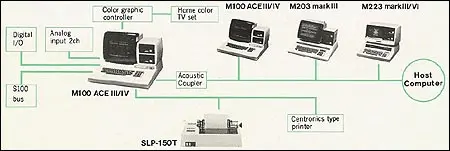
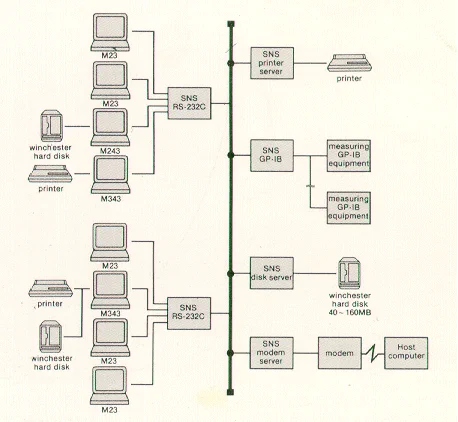
Motorola 68000 CPU Family
The Motorola 68000 is a 16/32-bit microprocessor that was first released in 1979. It was widely used in computers and other electronic devices during the 1980s and early 1990s. The 68000 was known for its advanced architecture, which included a 32-bit internal bus and a 24-bit address bus, allowing it to access up to 16 megabytes of memory. This made it more powerful than many other processors of its time, such as the Intel 8086 and Zilog Z80. It was also designed to be highly modular and expandable, with a large number of on-chip and off-chip peripherals.
Some of the most famous and successful computers that used the 68000 was the Commodore Amiga and the Atari ST, both of which were popular in the home and personal computer markets. Additionally, it was also used in workstations, such as the Sun 3 and Apollo DN3000, and in a wide variety of embedded systems and industrial control systems. The 68000 was also used in the Macintosh, the first model of the Macintosh was powered by a Motorola 68000 CPU. The processor was eventually succeeded by the 68020 and 68030, which offered improved performance and additional features.
The 68000 has a 32-bit instruction set, with 32-bit registers and a 16-bit internal data bus. The address bus is 24-bit and does not use memory segmentation, making it easier to address memory. There are three ALU's (Arithmetic Logic Unit), two for calculating addresses, and one for data, and the chip has a 16-bit external address bus.
The 68000 architecture was expanded with 32-bit ALUs, and caches. Here is a list with some 680x0 versions and their major improvements:
- 68010 - Virtual memory support
- 68020 - 32-bit ALU & Instruction Cache
- 68030 - On-Chip MMU, 2x 256 byte cache
- 68040 - 2x 4K Cache, 6 stage pipeline, FPU
- 68LC040 - No Floating Point Unit (FPU)
- 68060 - 2x 8K Cache, 10 stage pipelinet
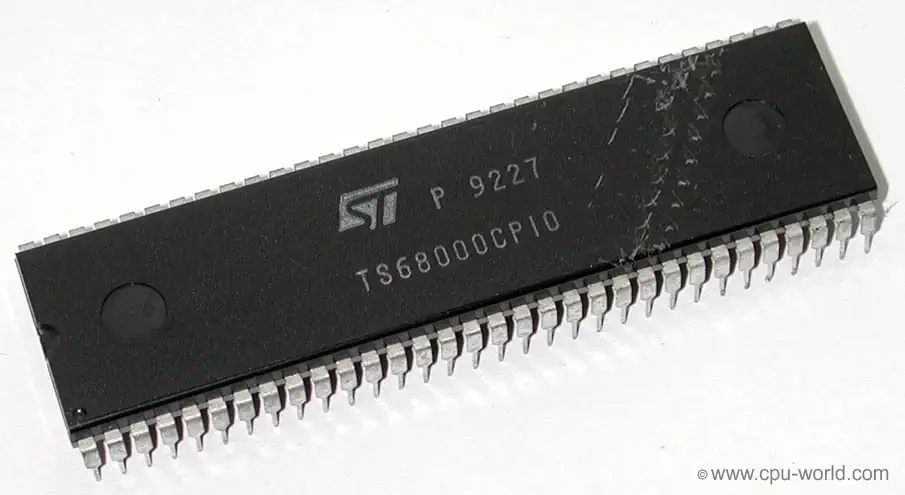
Source: WikiPedia - Motorola 6800
Source: WikiPedia - 68000 Series
Zilog Z80 CPU Family
The Z80 quickly became popular in the personal computer market, with many early personal computers, such as the TRS-80 and Sinclair ZX80, using the Z80 as their central processing unit (CPU). It was also widely used in home computers, such as the MSX range, SORD, and the Amstrad CPC, as well as in many arcade games. Additionally, it was also used in other applications such as industrial control systems, and embedded systems. The Z80 was widely used until the mid-1980s, when it was gradually replaced by newer microprocessors such as the Intel 80286 and the Motorola 68000.
The Z80 microprocessor was developed by Zilog, a company founded by Federico Faggin in 1974. The Z80 was released in July 1976, as a successor to the Intel 8080. It was designed to be fully compatible with the 8080, but also included new features such as an improved instruction set, more powerful interrupts, and a more sophisticated memory management system.
The Z80 quickly became popular in the personal computer market, with many early personal computers, such as the TRS-80 and Sinclair ZX80, using the Z80 as their central processing unit (CPU). It was also widely used in home computers, such as the MSX range, SORD, and the Amstrad CPC, as well as in many arcade games. Additionally, it was also used in other applications such as industrial control systems, and embedded systems. The Z80 was widely used until the mid-1980s, when it was gradually replaced by newer microprocessors such as the Intel 80286 and the Motorola 68000. The design was licensed to Synertek and Mostek as well as the European SGS.
The Z80s instruction set is binary compatible with the Intel 8080, so that 8080 code such as the CP/M Operating System and Intel's PL/M compiler for the 8080 can run unmodified on the Z80. The Z80 had many enhancements over the 8080 such as 16-bit data movement instructions, block copy and block I/O instructions, single bit addressing of all registers, IX/IY offset registers, better interrupt system and a complete duplicate register file for context switching during an interrupt.
Source: WikiPedia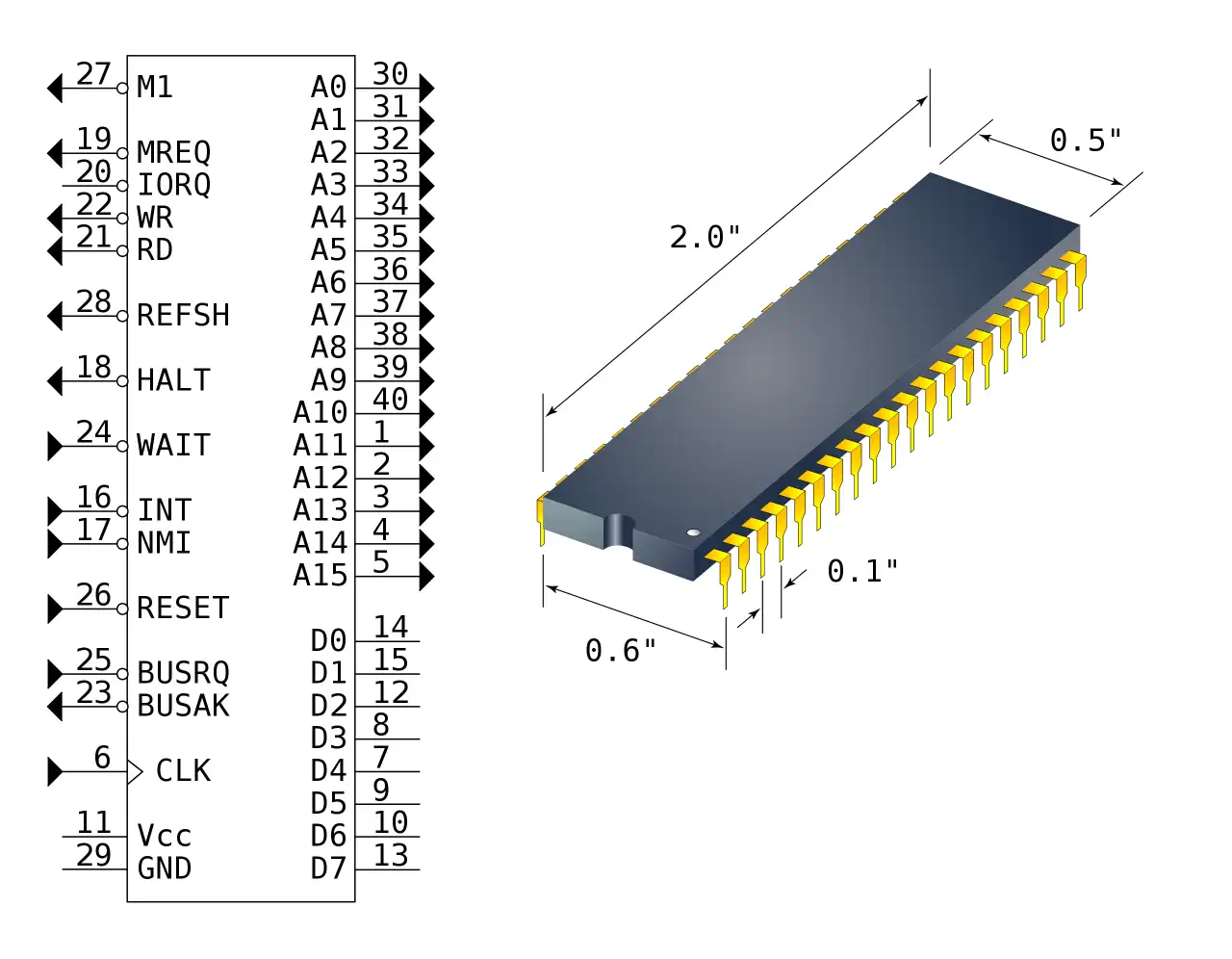
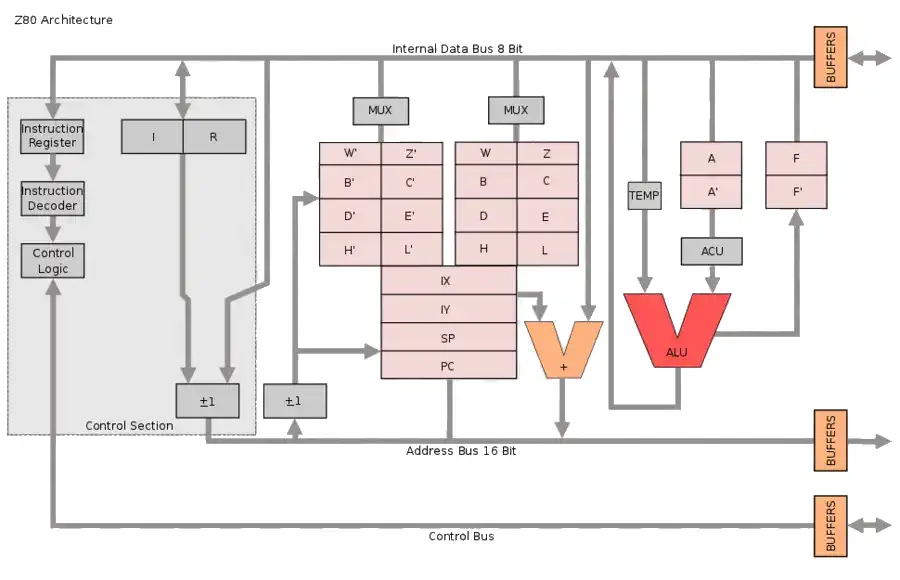
RAM max: 4MB Sound Chip none Sound Internal Speaker Display Chip none Display 80x25 text, 640x350 graphics Best Color 16 colors Best Graphics 640x400 (640x500 for MX) Sprites n/a System OS CP/M-80 or CP/M-68k Storage Double 5.25", 8" disk drives, or 20MByte Winchester HDD Original Price $4490

